For Her Long-term EOS Project, Greta Bolinger ’23 Becomes Both Kelp Farmer and Kelp Scientist
By Rebecca Goldfine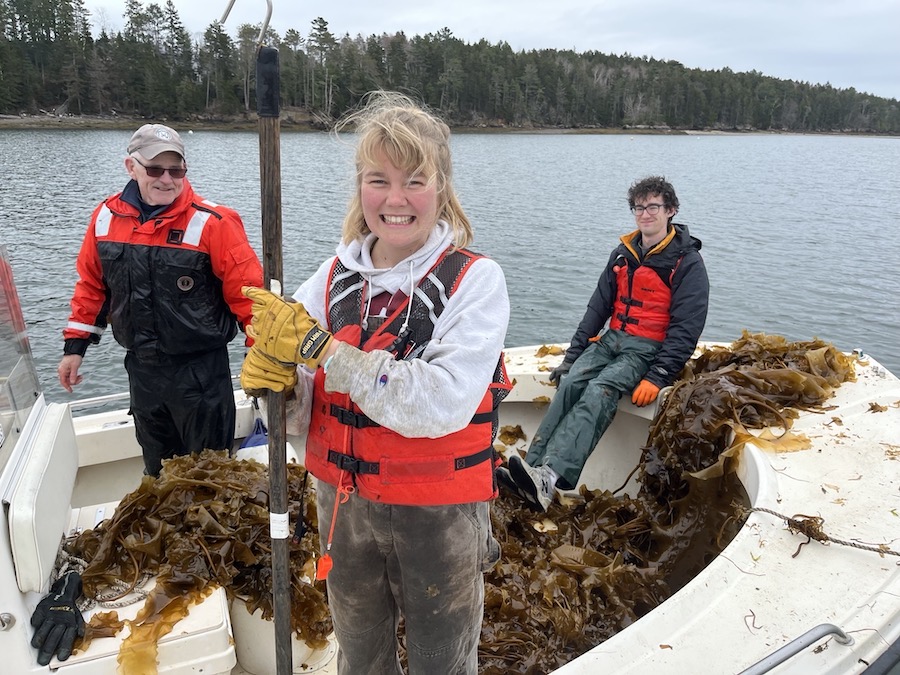
Bolinger's goal was "not just to yield a bountiful kelp harvest," she explained, but also to determine optimal light levels for growing sugar kelp in coastal, estuarine waters. While her experiment produced several interesting results, a key takeaway was that "kelp farms offer tremendous potential as venues for scientific research," she said.
Her advisor, Collin Roesler, Bowdoin's William R. Kenan Professor of Earth and Oceanographic Science, said that the two-pronged approach Bolinger took—in a lab and out in the field—was ambitious. "Greta wanted to design a framework that dovetailed aquaculture and science, where the farm supports the research, and the research improves the farm," she said. Pairing the farm with a controlled laboratory experiment to replicate conditions in Harpswell Sound "allowed her to isolate environmental factors in the lab while validating her results in the field."
Bolinger's project comes at a time when kelp is becoming an increasingly important aquaculture crop in Maine and elsewhere. Kelp is not just of great interest to fishers (who can grow it during the winter when they are not at sea), but also to land farmers, entrepreneurs, climate scientists, and policymakers. The brown algae is highly nutritious and can be used as a food product, food additive, and fertilizer.
It is also a promising antidote to rising carbon dioxide levels. As human activity generates more global warming emissions, kelp—which has fast-growing fronds—draws in large quantities of CO2 from the ocean and atmosphere. It also absorbs pollutants, helping to clean coastal waters of land runoff and preventing algal blooms that are harmful to shellfish.
Yet, Bolinger said, "there is still a lot of research to be done for it to become a viable blue carbon solution," referring to carbon captured and stored in the ocean. She added, "Right now the field is exploding in Maine and people are trying everything—sometimes at the cost of the marine ecosystem or a relationship with the working waterfront nearby."
She recommends more research into the commercial cultivation of kelp to minimize its impact on marine ecosystems and commercial fishing grounds, and to direct its benefits toward waterfront communities. Her own experiment is just a start.
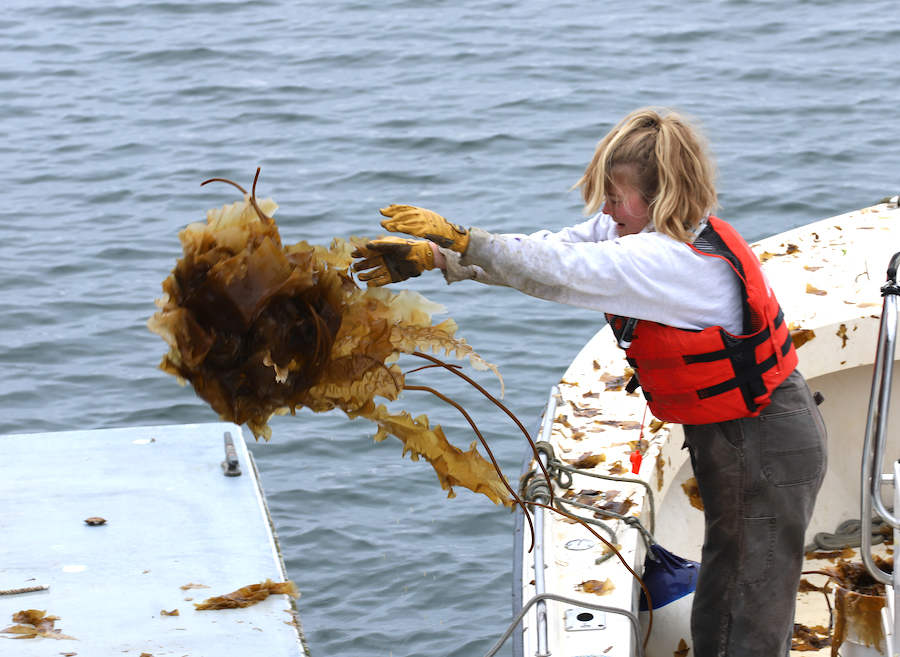
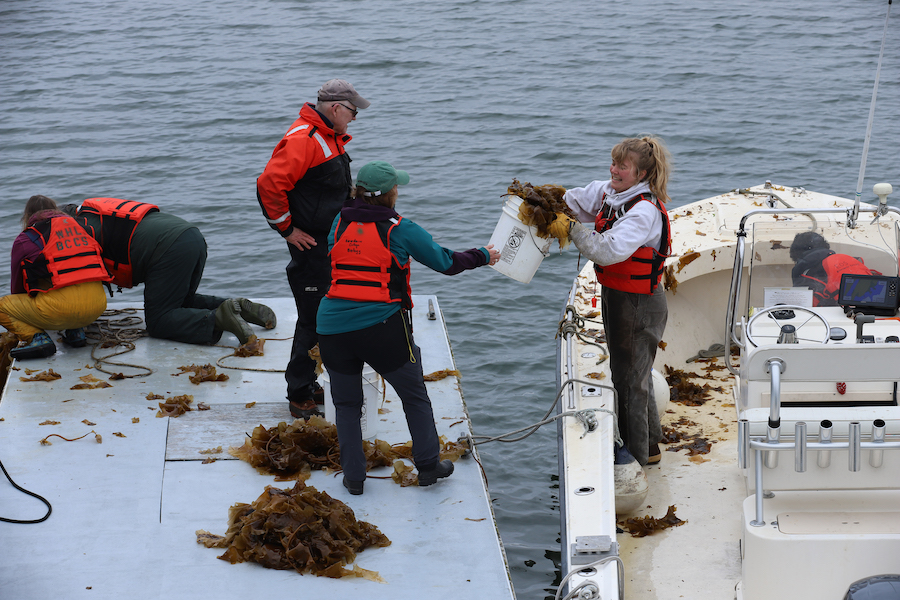
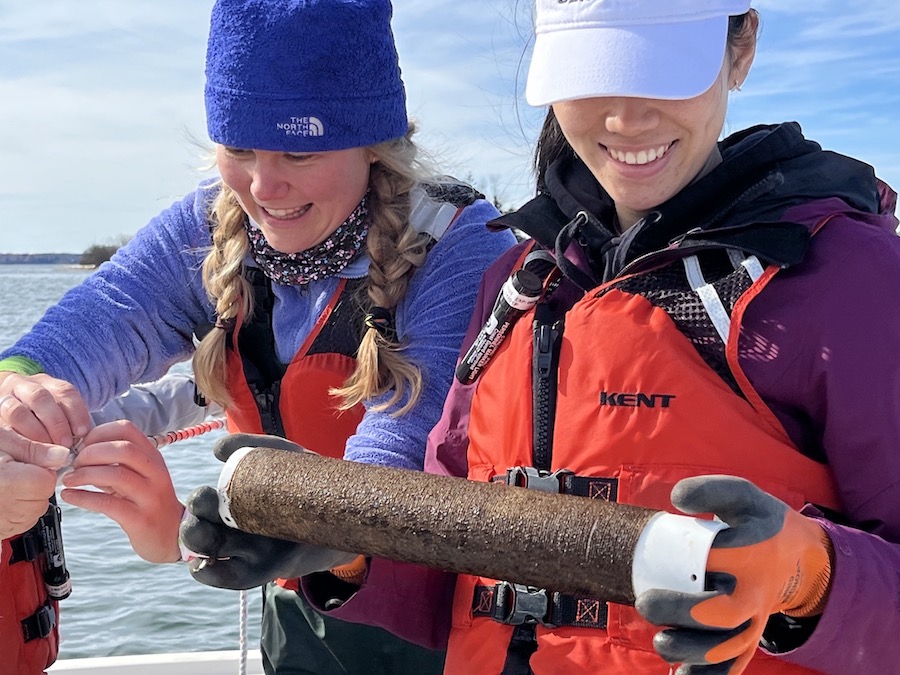
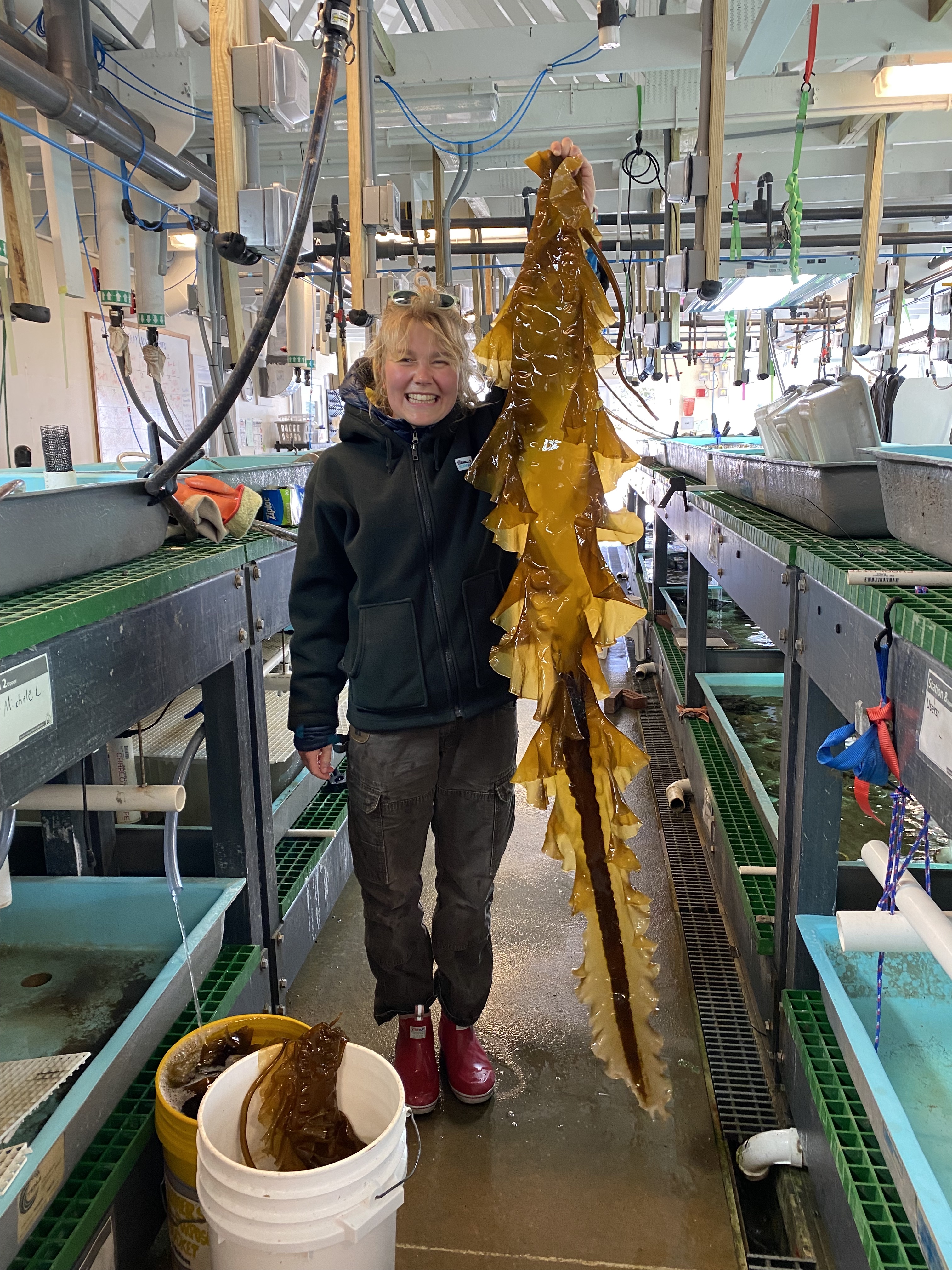
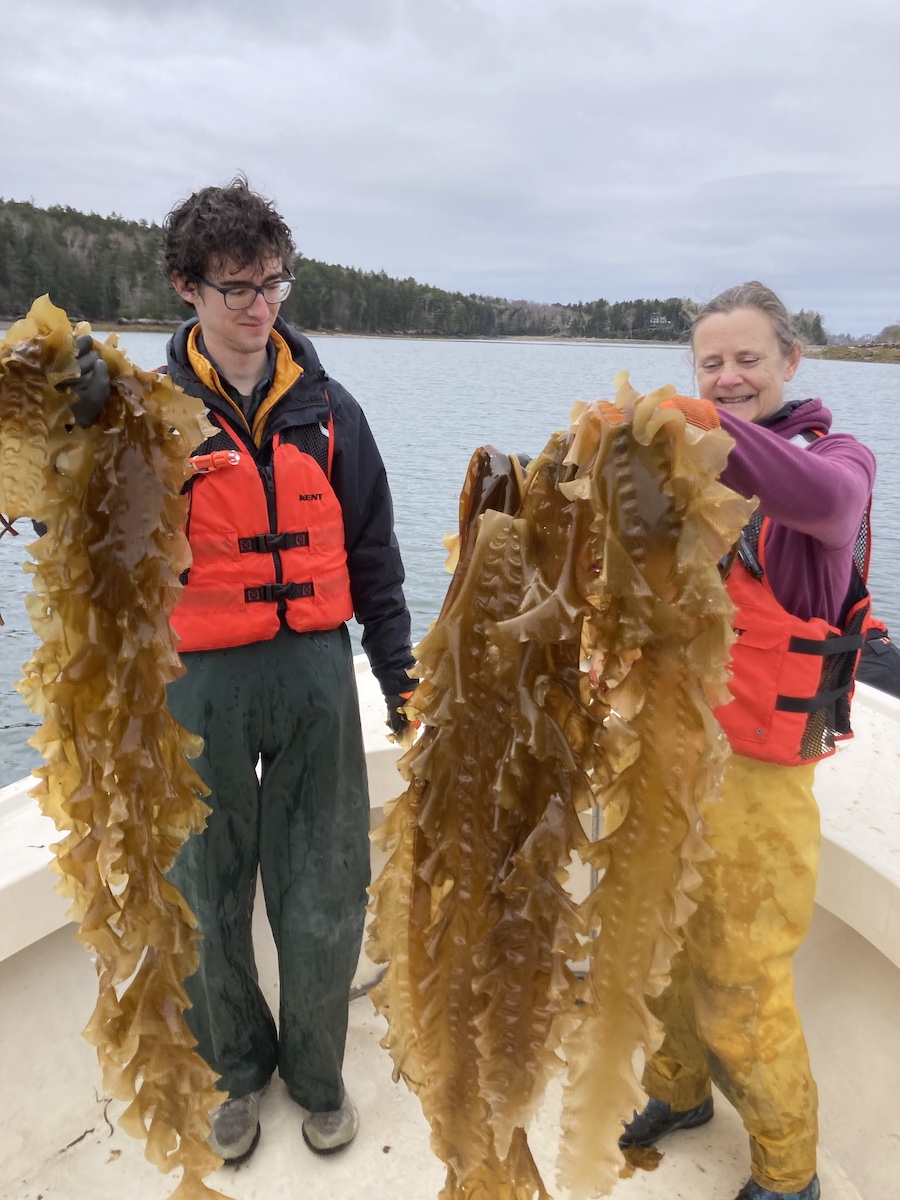
Studying Seaweed
Bolinger, who grew up in Lyme, New Hampshire, has long loved the ocean and knew she wanted to study marine biology at college. At Bowdoin, she majored in biology and minored in earth and oceanographic science.
Her specific interest in kelp was sparked during internships with research labs on San Juan Island, Washington, and in Corvallis, Oregon, as well as a stint working with a female kelp farmer (and herring fisher) in Alaska. Kelp farming opened her eyes to a part of the fishing industry that could be non-extractive and regenerative, she said.
As her interest grew, she heard about a new technique adopted by West Coast growers called depth cycling, in which kelp is drawn up to the ocean surface during the day to photosynthesize, and then cycled to deeper waters where it can absorb more nutrients (created by sinking phytoplankton).
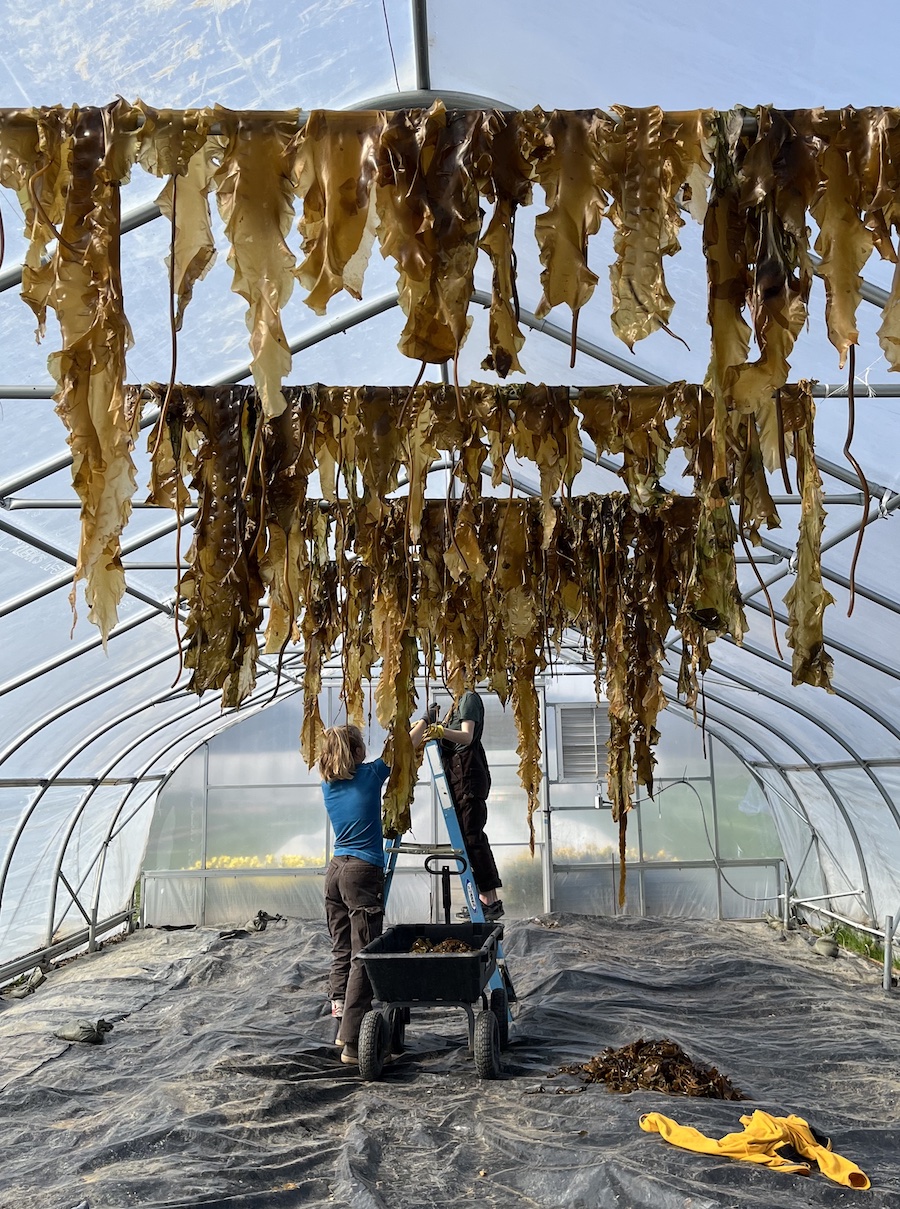
"They are trying to maximize the biomass output of the kelp," Bolinger said. "I think this is interesting and deserves more research." The technique inspired her to pursue the question: "If you transplant kelp between light levels, how long does it take for it to become photosynthetically productive again at the new light level?"
Kelp contains pigments that regulate how much light it absorbs. Some of these pigments act as light-harvesting molecules, allowing the algae to grow quickly or to absorb more light in shaded environments, while other pigments protect it from excess light and getting sunburned.
Bolinger was also curious to find out what light levels create the best growing conditions for kelp. In the aquaculture farm she set up, she seeded kelp along vertical lines attached to a fifty-foot line at four depths: at the surface, at one meter, at five meters, and at nine meters. In the lab, she grew kelp in four tanks that replicated the light levels at these real-world depths.
After two months, she transplanted her lab-grown kelp between the different tanks and sampled them every day with a high-performance liquid chromatography machine to determine their concentrations of pigments. "I was looking at whether the kelp were changing the concentrations of their photoprotective pigments and light-harvesting pigments, and over what time period they were doing that," she explained.
Her data showed that the kelp required seven to ten days to return to the ratio of pigments it had maintained before the transplanting, information that could help growers using the depth-cycling technique.
Bolinger had hoped to also transplant her line-grown kelp to different depths, but wasn't able to accomplish this because Bowdoin's boats don't go out during the winter. Nonetheless, she made exciting findings on her farm, where she let the kelp grow for about six months, through its growth period in December (when it produces a lot of photosynthetic pigments) to its reproductive stage around March (when its photosynthetic pigments diminish).
In late April, she and a small crew harvested the 150 pounds of kelp from her small aquaculture operation (and found, along with the fronds, a spider crab and yellow eels, part of a "whole kelp ecosystem"). She measured and weighed the kelp and found that it grew best at a depth of five meters. But, "because I didn't grow kelp between one meter and five meters, it's very possible that there is a better depth between them," she added.
Bolinger donated her harvest to Growing to Give, a farm in Brunswick, which will add it to fertilizer. She also gave some of it to friends who used it in various ways—baked it into a carrot cake, made a kelp soup, pickled it, and turned it into artwork.
This summer, Bolinger is taking a break from ocean research and working for NOAA's National Center for Environmental Information in Asheville, North Carolina. She will use remote sensing and satellite images to quantify trends in the air quality over the Pacific Northwest during the past twenty-year drought.
But she plans to return to oceanography, and even to this experiment. Her next goal is to test the nutritive value of kelp grown at different depths and light values.
"I like to see the impact of my work," she said. Not only was it satisfying to run a scientific experiment that resulted in data she hopes to publish, but "it was satisfying to harvest the kelp and give it to a farm."